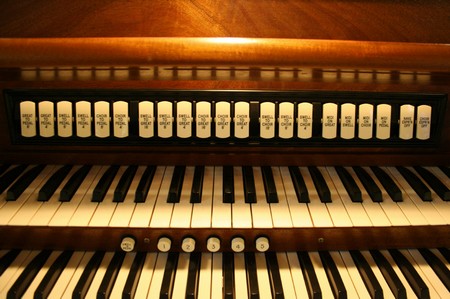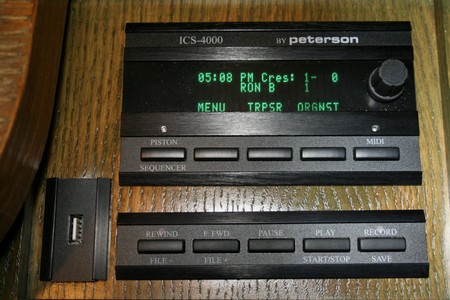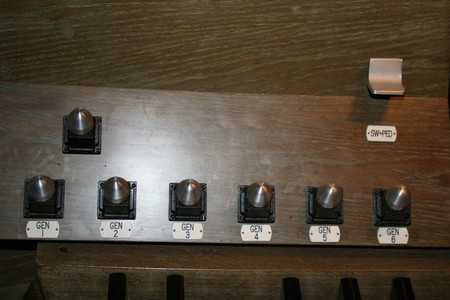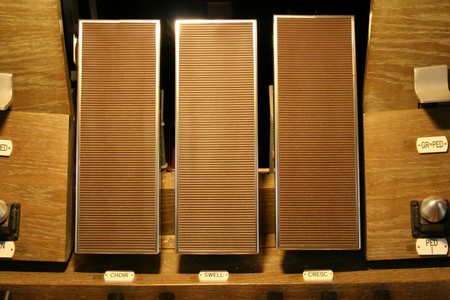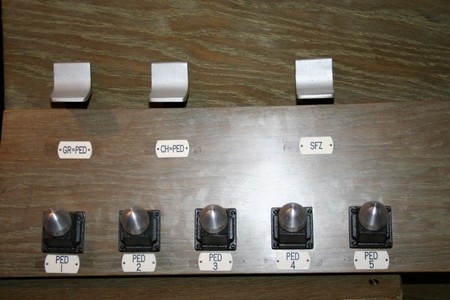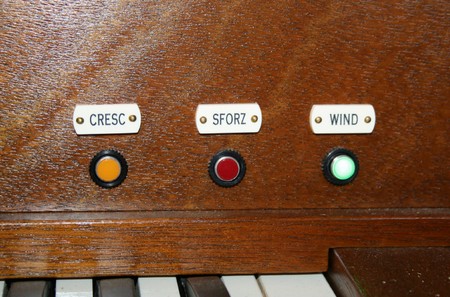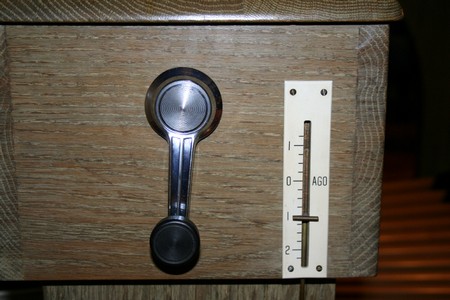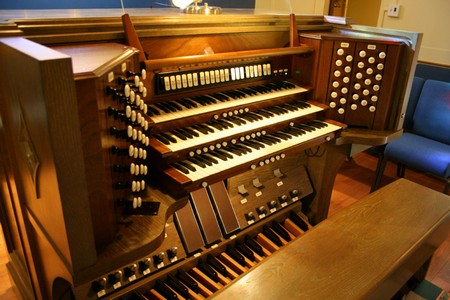 |
The specification 3/36
means three manuals (or keyboards) and 36 ranks of pipes. In the photo
we can see the three manuals, but far more than 36 draw knobs for the
36 ranks. Stop knobs for couplers, tremulants, percussion, and stops
which combine intervals of pipes (harmonic and mutation stops) make up
the difference.
This is the original Schantz console for the organ, but it has been
almost completely rebuilt by Muller. The only original parts are the
console shell, manuals, pedal board, and bench. |
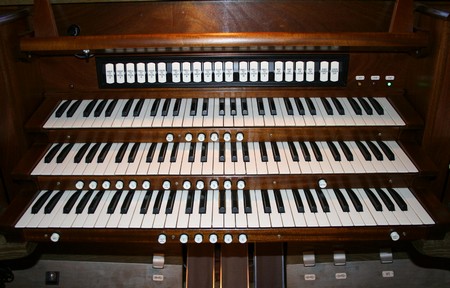 |
Three manuals but only
two hands - what is an organist to do? Each manual represents a
division of the organ. The top is the Swell, middle is the Great, and
bottom is the Choir. The organist can set different registrations for
each manual by selecting draw knobs from each division. Need more
sound? Use the tilting tablets across the top and simply couple
divisions together (Great to Swell, etc.) to get additional resources.
The number of registration combinations can be mind-boggling!
|
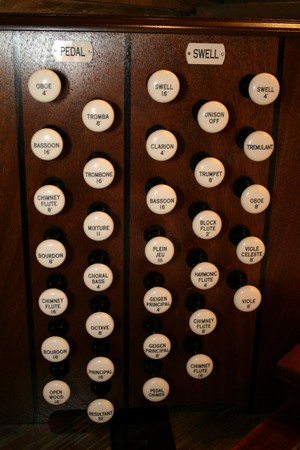 |
On
the
left side of
the console we see the Pedal and Swell stop knobs. For the most part
Muller stuck with English spellings of for the stop knobs. Note, for
example, the Tremulant, Swell 16', and Pedal Chimes knobs which are not
ranks but stops on the organ. Usually an organ will have more
stops than ranks, but there are exceptions. |
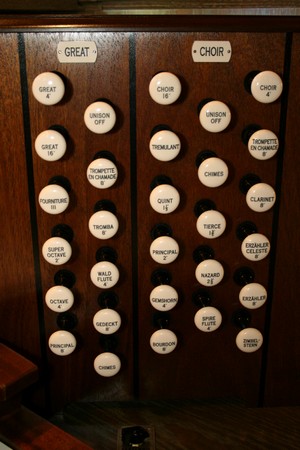
|
On
the right side we see the stop knobs for the Great and Choir divisions.
A quirk of this organ is that the draw knobs for the Swell and Choir
divisions are opposite of where the pipes actually reside in the
chambers (Choir stops are on the right side of the console, but the
pipes are in the left chamber, and vice versa for the Swell). Most of
the ranks in the Choir division have softer sounding pipes.
|
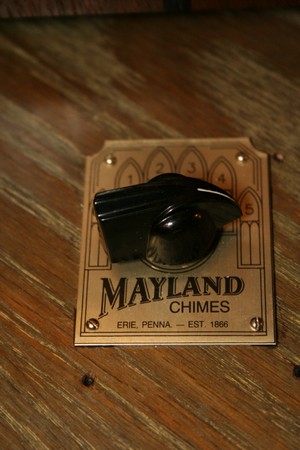 |
This organ has a set
of chimes which are located in the Choir division under
expression. Rotating the knob from 0 to 5 varies the strike of the
hammer against the chime (5 being the hardest thus the loudest). Chimes
add a nice touch to the overall organ sound. |
As
noted earlier, the tilting tabs (left photo below) are
couplers which allow the organist to play multiple
divisions of the organ at the same time. This is further broken down by
fundamental of the divisions (ex: Swell to Great 16', Swell to Great
8', etc.).
This organ also has a MIDI system capable of generating sound
electronically. The organist
first selects one of the MIDI tabs on the right, then uses the Peterson
system (right photo below) to select the desired rank or
sound. While the MIDI
can
provide a significant amount of sound, it is meant to accompany the
physical organ rather than to dominate it. The Peterson system also
allows the organist to record and save what is being played. |
